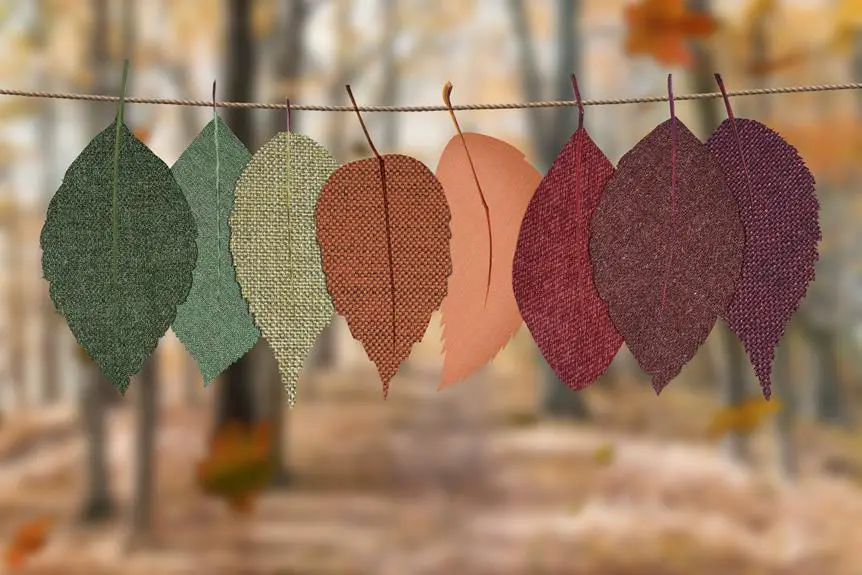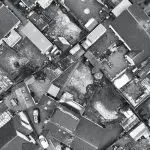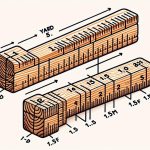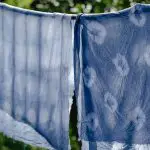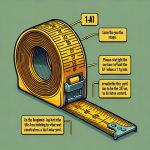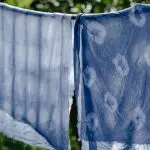Unlock the mystery of fabric measurements and delve into the world of yards and inches. Understanding the conversion between these units is essential for mastering the art of sewing and crafting.
By discovering the secret to fabrics and how many inches are in a yard, you will gain the confidence to tackle any project with precision and expertise. This knowledge will elevate your skills and enable you to create flawless garments and beautiful crafts.
Embrace the power of accurate measurements and unravel the complexities of fabric length. With this newfound understanding, you will elevate your mastery and transform your creations into works of art.
Key Takeaways
- Fabric is measured in yards, not inches, to determine the length needed for a project.
- Different fabrics have varying shrinkage rates, which should be considered when calculating yardage.
- Accurate fabric measurements are crucial for the success of sewing and crafting endeavors.
- The common misconception that there are 36 inches in a yard is incorrect, as the accurate length of a yard is 36.67 inches.
The Basics of Fabric Measurements
You measure fabric in yards to determine the length of the material you need for your project. Understanding the basics of fabric measurements is crucial for ensuring the success of your sewing or crafting endeavors. When working with fabric, it's important to consider the fabric composition and potential shrinkage. Different fabrics, such as cotton, wool, or synthetic blends, can have varying shrinkage rates, meaning you may need to account for this when calculating the yardage needed for your project.
Another key factor to consider is the fabric weight and density. Fabric weight refers to how heavy or light the fabric is, while density relates to how tightly woven the fibers are. Both of these factors can impact the yardage required for your project, as heavier, denser fabrics may require more yardage to achieve the desired outcome.
Understanding Yard and Inch Conversion
To convert yards to inches, simply multiply the number of yards by 36. Understanding yard and inch conversion is essential for accurate fabric measurements. When it comes to yardstick accuracy, it's crucial to ensure that your yardstick is precise and not worn or warped, as this can lead to inaccuracies in measurements. In addition, mastering inch conversion techniques is key to working with fabrics effectively. Here's a handy reference table to help you visualize the conversion process:
| Yards | Inches |
|---|---|
| 1 | 36 |
| 2 | 72 |
| 3 | 108 |
| 4 | 144 |
| 5 | 180 |
Practical Applications in Sewing and Crafting
When crafting or sewing, precise measurements in inches and yards are crucial for achieving accurate and professional results. Understanding the practical applications of yard and inch measurements is essential for fabric cutting and sewing accuracy.
- Fabric Cutting: Utilizing precise measurements in inches and yards is vital when cutting fabric for sewing projects. Whether you're creating clothing, quilts, or home decor items, accurate cutting ensures that pieces fit together seamlessly, resulting in a polished finished product.
- Sewing Accuracy: Incorporating the correct yard and inch measurements into your sewing projects is fundamental for achieving accuracy. From stitching straight seams to ensuring symmetrical designs, precise measurements play a significant role in the overall quality of your work.
- Pattern Scaling: When altering or scaling sewing patterns, understanding how many inches are in a yard is indispensable. This knowledge allows you to adjust patterns accurately, ensuring that the proportions remain consistent and the final garment or item fits as intended.
Mastering the practical applications of yard and inch measurements will elevate your crafting and sewing skills, leading to professional-looking and precisely tailored creations.
Tips for Accurate Fabric Measurement
Now, let's get into the nitty-gritty of accurate fabric measurement.
You'll learn about the crucial yard vs. meter conversion.
You'll also learn about essential measuring tools and techniques.
Additionally, you'll learn how to steer clear of common measurement mistakes.
These points will equip you with the knowledge and skills necessary for precise fabric measurement in your sewing and crafting endeavors.
Yard Vs. Meter Conversion
Begin by measuring fabric in yards, then convert to meters for accurate international comparisons.
When converting fabric measurements from yards to meters, keep these tips in mind for precision:
- 1 yard is equal to 0.9144 meters, so multiply the yard measurement by 0.9144 to get the equivalent in meters.
- When selecting fabric internationally, understanding the yard to meter conversion ensures you get the right amount for your project.
- Be mindful of the metric system comparison and conversion to avoid miscalculations and material shortages.
Mastering the yard to meter conversion will give you confidence in accurately comparing fabric lengths for your projects, whether for local or international use.
Understanding this conversion empowers you to make informed decisions when selecting and measuring fabric, allowing for seamless integration into diverse projects.
Measuring Tools and Techniques
To accurately measure fabric for your projects, utilize reliable tools such as a fabric measuring tape and employ precise techniques to ensure correct measurements.
When it comes to precision cutting, having a sharp pair of fabric scissors is crucial.
Measuring tape essentials include a flexible, fabric-specific measuring tape that lays flat against the fabric for accurate readings.
When measuring, ensure the fabric lies flat and isn't stretched or distorted to obtain accurate measurements.
Always measure twice to double-check the accuracy of your dimensions before making any cuts.
It's also important to measure in a well-lit area and at a comfortable height to avoid any errors.
Avoiding Common Measurement Mistakes
To ensure accurate fabric measurement, utilize proper techniques and tools, such as a fabric measuring tape and sharp scissors, to avoid common mistakes that can lead to inaccuracies in your dimensions. Here are some tips to help you avoid measurement errors:
- Always measure on a flat surface to prevent distortion in the fabric.
- Double-check your measurements to ensure accuracy, especially for larger projects.
- Avoid stretching the fabric while measuring, as this can lead to incorrect dimensions.
Common Misconceptions About Yard and Inch
You may think that there are 36 inches in a yard, but that's not entirely accurate. The common misconception about the number of inches in a yard often stems from the fact that a yardstick is indeed 36 inches long. However, when it comes to fabric cutting techniques and precise measurements, it's crucial to understand the true value.
A yard is actually equivalent to 36 inches, but when it comes to fabric measurements, the accurate length of a yard is 36.67 inches, not 36 inches. This small difference can have a significant impact, especially when working on projects that require precise measurements.
Understanding this common misconception about the yard and inch is essential for anyone working with fabrics. It ensures that your fabric cutting techniques are as accurate as possible, ultimately leading to better end results in your sewing or crafting projects.
Therefore, always keep in mind the true length of a yard when working with fabrics, and consider using a measuring tape for the most precise measurements.
Tools and Techniques for Precise Measurement
To achieve accurate measurements, it's essential to have the right tools at your disposal.
A yardstick is a must for precise yard measurements, while a measuring tape is an indispensable tool for accurately measuring fabric lengths.
In addition, mastering the art of precise cutting is crucial for achieving the perfect fit in your fabric projects.
Yardstick for Accurate Measurement
Achieve precise measurements by relying on the yardstick for accurate fabric cuts and dimensions.
When it comes to mastering the art of precise measurement, there are a few essential tools and techniques you should consider:
- Customized Yardsticks: Invest in customized yardsticks that cater to your specific measurement needs. These specialized tools can provide the precision required for unique fabric cuts and dimensions.
- Precision Cutting Tools: Pair your yardstick with precision cutting tools such as rotary cutters and fabric scissors. This combination ensures that your fabric is cut accurately based on the measurements taken.
- Consistent Pressure: Apply consistent pressure when using the yardstick to prevent fabric distortion. This will help maintain the accuracy of your measurements throughout the cutting process.
Measuring Tape Essentials
When obtaining accurate measurements for fabric cuts and dimensions, ensure you have a reliable measuring tape at your disposal. Measuring accuracy and precision are crucial for achieving the perfect fabric cuts.
To guarantee precise measurements, start by choosing a high-quality measuring tape with clear markings and a sturdy, retractable mechanism. When using the measuring tape, always ensure it lies flat against the fabric without any twists or bends, and take measurements at eye level to prevent parallax errors.
Additionally, understanding fabric cutting techniques and tips can further enhance your precision. For example, using pattern weights to hold the fabric in place and employing sharp, quality scissors can make a significant difference in achieving clean, accurate cuts.
Tips for Precise Cutting
Ensure that as you measure and cut fabric, you have the right tools and techniques at your disposal for precision and accuracy. Here are some essential tips for precise cutting:
- Quality Scissors: Invest in a pair of sharp fabric scissors designed specifically for clean and accurate cuts. Avoid using them for anything other than fabric to maintain their sharpness.
- Rotary Cutter and Mat: For straight cuts and smooth edges, a rotary cutter and self-healing cutting mat are indispensable. They provide stability and allow for precise measurements and cutting.
- Clear Ruler or Quilting Square: A transparent ruler or quilting square enables you to see the fabric beneath, ensuring accurate measurements and straight lines.
Exploring Fabric Measurement Standards
You'll find that fabric measurement standards dictate that there are 36 inches in a yard. Fabric industry standards have evolved over time, with historical influences shaping the way measurements are standardized today. Understanding the cultural variations in measurement practices is crucial when working with fabrics from different regions.
For instance, some cultures may have their own unique systems of measurement, which can impact the way fabrics are labeled and sold. It's essential to familiarize yourself with these variations to ensure accurate fabric measurements.
By delving into the historical evolution of fabric measurement standards, you gain a deeper appreciation of how the current system came to be. This knowledge can empower you to navigate through different measurement practices, allowing you to confidently work with fabrics from diverse cultural backgrounds.
Whether you're a seasoned professional or a budding enthusiast, mastering fabric measurement standards will undoubtedly enhance your expertise in the craft. Embracing these standards equips you with the precision necessary for accurate cutting and sewing, ultimately elevating the quality of your fabric projects.
Simplifying Yard-to-Inch Conversions
You frequently convert yards to inches by multiplying the yard measurement by 36. This simple equation helps you quickly and accurately convert fabric measurements from yards to inches.
To simplify yard-to-inch conversions, keep these tips in mind:
- Utilize a Conversion Chart: Keep a conversion chart handy for quick reference. This can significantly speed up the process and reduce the likelihood of errors.
- Use Multiples of 36: When working with larger quantities of fabric, think in multiples of 36 to make the conversion process more manageable and efficient.
- Practice Mental Math: Familiarize yourself with the yard-to-inch conversion factor of 36 to streamline your calculations and build confidence in your fabric measurement techniques.
By incorporating these techniques into your fabric measurement process, you can simplify yard-to-inch conversions and enhance your proficiency in working with fabric measurements.
Whether you're a seasoned professional or a novice enthusiast, mastering yard-to-inch conversions is essential for accurate and efficient fabric measurement.
Frequently Asked Questions
Can I Use a Meter Stick Instead of a Yardstick for Fabric Measurements?
Yes, you can use a meter stick instead of a yardstick for fabric measurements, but be aware of differences in accuracy. Yardsticks adhere to fabric standards, while meter sticks may provide slightly different measurements.
How Do Different Fabric Types Affect the Accuracy of Yard and Inch Measurements?
Different fabric types can affect yard and inch measurements. Fabrics with shrinkage may lead to inaccurate measurements over time, while stretchable fabrics can cause variations in measurements. Understanding these properties is crucial for precise fabric cutting.
Are There Any Cultural or Historical Reasons for the Yard and Inch Measurements in Fabric?
Cultural origins of yard and inch measurements in fabric date back to medieval England, where the yard was defined as the distance from King Henry I's nose to the thumb of his outstretched arm. Historical significance lies in its enduring legacy across different cultures.
What Are Some Common Mistakes People Make When Converting Between Yards and Inches for Fabric Measurements?
When converting between yards and inches for fabric measurements, common mistakes include not considering measurement standards, fabric types, and accuracy in conversion. To avoid errors, ensure you understand the specific requirements for each fabric type.
Is There a Standard for Fabric Measurements in Countries Outside of the United States?
In countries outside of the United States, there are varying international standards for fabric measurements, and alternative measurement methods may be used. It's important to familiarize yourself with these standards when working with international fabrics.
- Is Organza More Expensive Than Silk? - April 23, 2024
- What Is Organza Vs Chiffon? - April 23, 2024
- What Kind of Fabric Is Organza? - April 23, 2024

